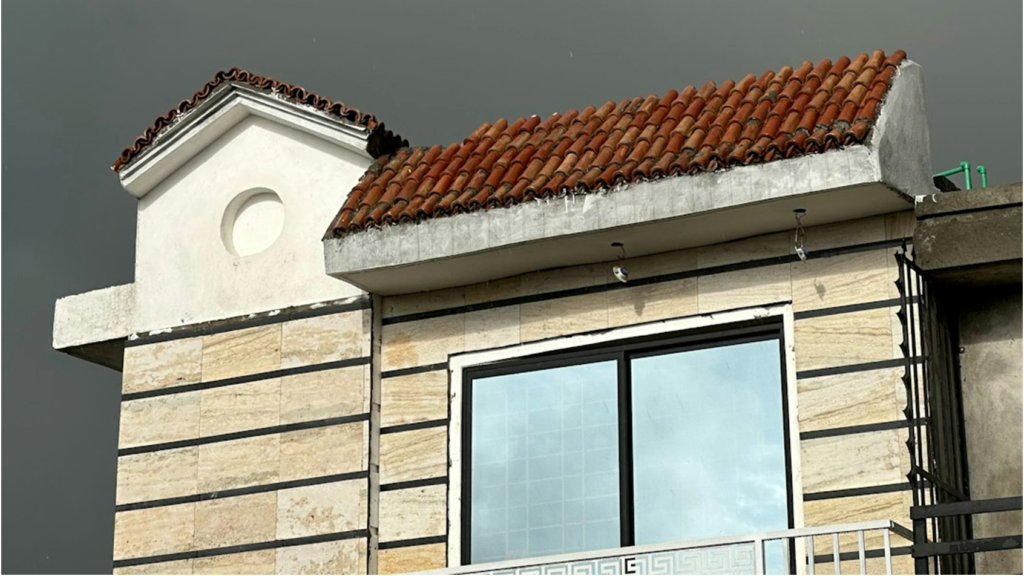Extreme weather conditions can have a significant impact on the integrity and lifespan of your roof. As a homeowner, understanding how various weather elements affect your roofing and how to prepare for these challenges is crucial in protecting your investment. In this article, we’ll explore the types of weather that can damage your roof, the signs of roof damage, and the steps you can take to weatherproof your roofing and repair any damage.

Understanding the types of extreme weather that can impact your roof
Understanding the types of extreme weather that can impact your roof helps in taking the necessary precautions to protect it. Here are some of the most common weather conditions that pose a threat to roofing structures:
Heavy Rain
Heavy rain can lead to water pooling on your roof, especially if the drainage system is not functioning correctly. This can cause leaks, mold growth, and even structural damage over time. It’s essential to ensure that your gutters and downspouts are clear and capable of handling large volumes of water.
High Winds
High winds can lift and remove shingles, leaving the underlying structure exposed to the elements. This not only increases the risk of leaks but also compromises the roof’s structural integrity. After a windstorm, it’s vital to inspect your roof for any missing or damaged shingles.
Hailstorms
Hail can cause significant damage to roofing materials, leading to cracks, dents, and punctures. The size and intensity of the hailstones determine the extent of the damage. After a hailstorm, inspecting your roof for any visible damage is crucial.
Snow and Ice

Accumulated snow and ice can add excessive weight to your roof, leading to potential collapses, especially in older homes or those with flat roofs. Ice dams, which form when melting snow refreezes at the roof’s edge, can cause water to back up under the shingles and into your home.
Extreme Heat
Extreme heat can cause roofing materials to expand and contract, leading to cracks and other forms of damage. Over time, this can weaken the roof and reduce its effectiveness in protecting your home.
Signs of Roof Damage
Being able to identify the signs of roof damage early can save you time and money in the long run. Here are some indicators that your roof may have sustained damage from extreme weather:
Leaks and Water Stains
Water stains on your ceiling or walls are a clear sign of a leaking roof. If you notice any discoloration or dampness, it’s important to investigate the source promptly.
Missing or Damaged Shingles
Missing or damaged shingles are a common result of high winds and hailstorms. Regularly inspecting your roof and replacing any compromised shingles can prevent further damage.
Sagging Roof
A sagging roof is a serious issue that indicates structural damage. This can result from accumulated snow and ice or prolonged exposure to moisture. If you notice any sagging, it’s crucial to contact a roofing professional immediately.
Mold and Mildew
Mold and mildew growth, both inside and outside your home, can indicate a moisture problem with your roof. Addressing this issue promptly can prevent further damage and potential health risks.
Weatherproof Roofing Solutions
Taking proactive measures to weatherproof your roofing can prevent damage from extreme weather and extend the lifespan of your roof. Here are some effective solutions:
Regular Maintenance and Inspections
Conducting regular maintenance and inspections is the best way to ensure that your roof remains in good condition. This includes clearing debris, checking for damage, and ensuring that your drainage system is functioning correctly.
Reinforce Roofing Materials
Reinforcing your roofing materials can provide additional protection against extreme weather. Consider upgrading to more durable materials, such as impact-resistant shingles or metal roofing, which can withstand high winds and hail.
Install a Proper Drainage System
A well-functioning drainage system is crucial in preventing water damage. Ensure that your gutters and downspouts are clear of debris and capable of handling large volumes of water.
Insulation and Ventilation
Proper insulation and ventilation can help regulate the temperature in your attic, reducing the risk of ice dams in the winter and heat damage in the summer. This can also improve your home’s energy efficiency.
Roof Damage Repair
If your roof has sustained damage from extreme weather, taking prompt action can prevent further issues and costly repairs. Here’s what you need to know about roof damage repair:
Assess the Damage
Before making any repairs, it’s important to assess the extent of the damage. This may require a professional inspection to identify all areas that need attention.
Temporary Repairs
If you notice any leaks or exposed areas, consider making temporary repairs to prevent further damage. This can include covering holes with tarps or replacing missing shingles.
Professional Roof Repair
For significant damage, hiring a professional roofing contractor is recommended. They have the expertise and tools to make the necessary repairs safely and effectively.
Insurance Claims
If your roof damage is covered by your homeowner’s insurance policy, be sure to document the damage and contact your insurance provider promptly. They can guide you through the claims process and help cover repair costs.
Conclusion
Understanding the impact of extreme weather on your roof and taking steps to weatherproof and repair damage is essential in protecting your home. By staying vigilant and proactive, you can ensure that your roof remains a reliable barrier against the elements for years to come. Remember to schedule regular inspections, invest in durable materials, and seek professional help when needed. With these measures in place, you’ll be well-equipped to handle whatever Mother Nature throws your way.
